Google Gemini says high surface temperatures are responsible for large storm surges and intense storms, and then says the record storm surge in Britain during February 1953 was caused by an intense storm with low sea surface temperatures.
“However, with climate change increasing sea surface temperatures, future storms are likely to be more intense and generate higher surges, making events like the 1953 flood even more dangerous.”
“The Royal Charter Storm, also known as the Great Storm of 1859, was a severe storm that hit the Irish Sea on October 25–26, 1859. …. The storm killed over 800 people and destroyed or damaged more than 200 ships. …. The storm was slow moving and brought winds of over 100 miles per hour (160 km/h). The storm’s effects were felt from the English Channel to Scotland,”
“Here’s a breakdown of why we get intense ocean storms in winter, even when sea surface temperatures are lower:
Temperature Differences: While the ocean surface is cooler in winter, there’s still a significant temperature difference between the ocean and the cold Arctic air masses. This contrast creates instability in the atmosphere, fueling the development of powerful storms called extratropical cyclones or winter storms.”



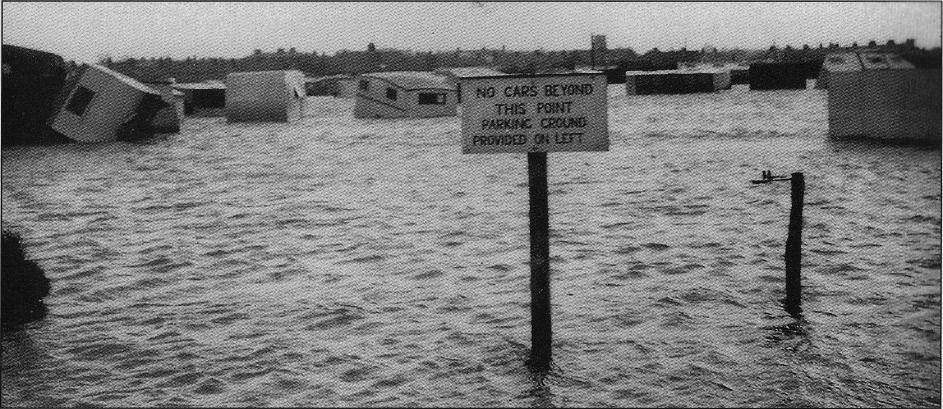
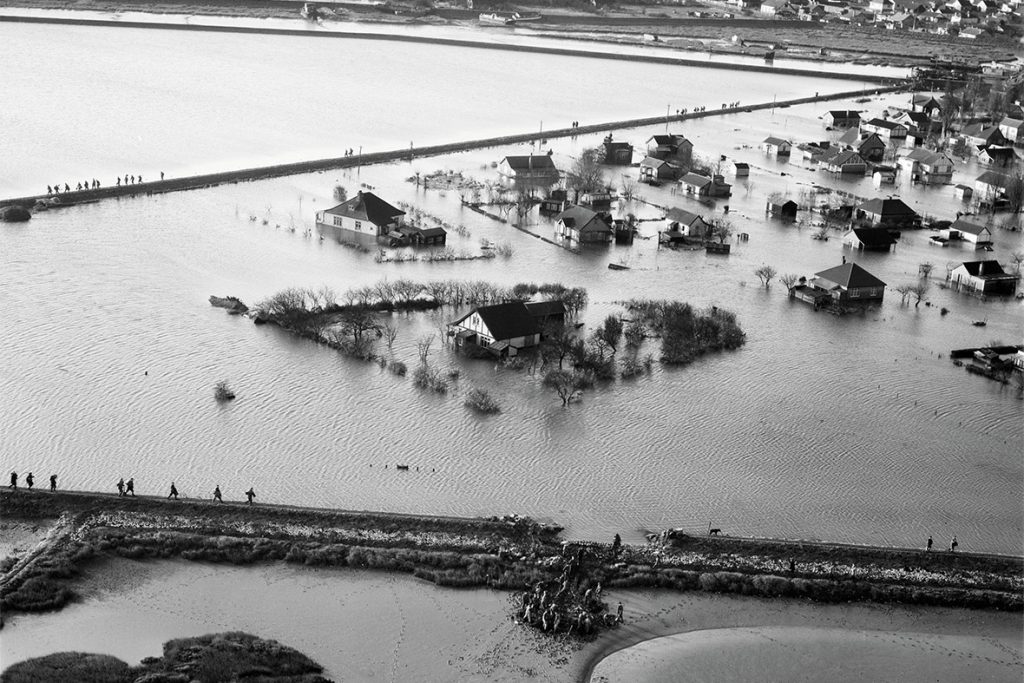
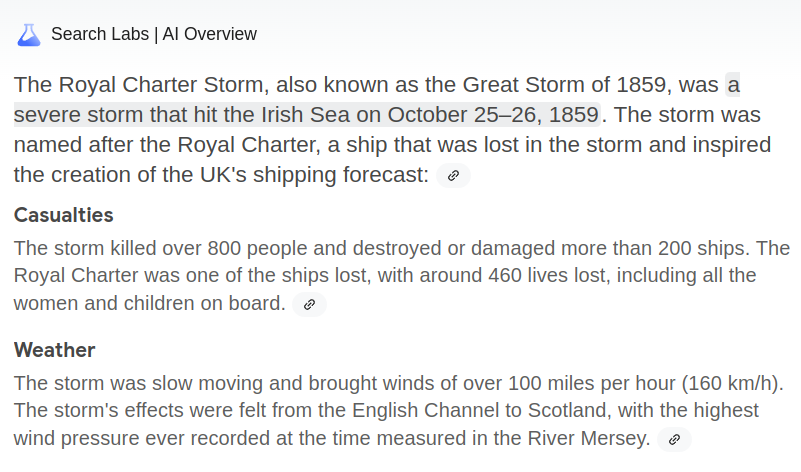
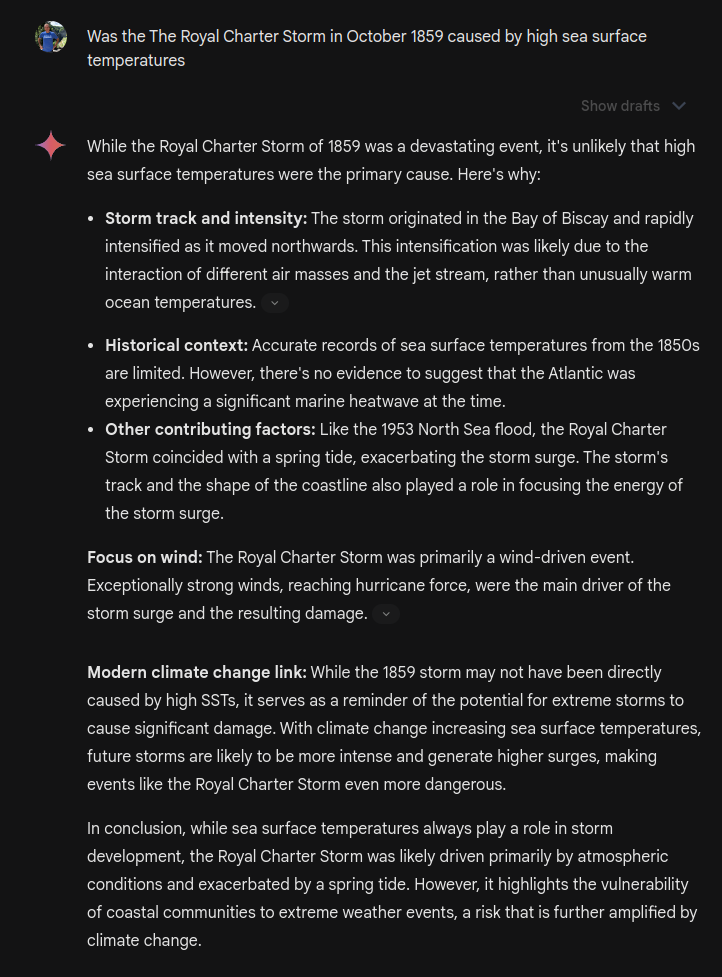
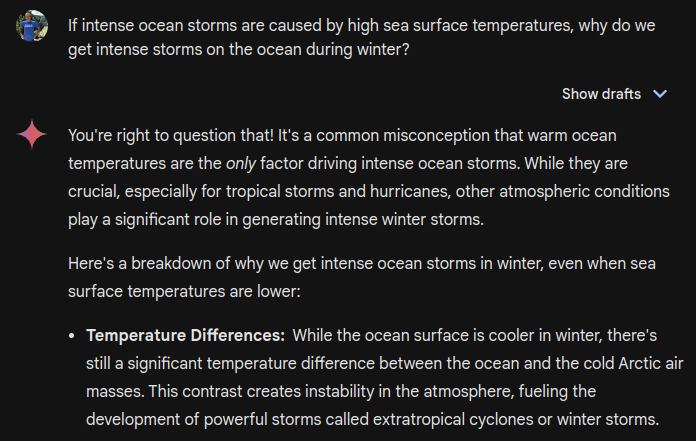

You have to wonder how much higher the surface temperature is, and how deep the higher temperature goes. It’s a limited body of water that will expand outward extending the shoreline inland. Has there been and indication of this beyond the norm? The tide gages don’t show it. The ocean surface temperatures are varying all the time. How much of this is higher than previously occurred? What data do they have that shows this and proves it’s not just normal variation of the surface temperature. The whole answer is in general and simple theoretical terms, and is unsupported by actual evidence. The AI seems to have no sense of science and just regurgitates what it has been fed. I like the way it tells us “think of it this way” then only gives an unsophisticated one dimensional theoretical answer. I think these massive storms are probably multidimensional. It seems as if the AI struggles to insert global warming, even when it acknowledges other forces are involved.
The explanation that Helene hit a cold front, and the interaction cooled the hot moisture laden air, causing greater rainfall, is a much better explanation than blaming it on ubiquitous global warming.
Indeed the ‘think of it this way’ summarizes the BS of the source material, and biases fed into the training (I imagine the sacred cow of AGW is practically hard wired into the system) the explanation is thermodynamic nonsense.
Yeah. The Persian Gulf water reaches 40 C and they never have hurricanes.
The Red Sea reaches 92 F. Today in Jzn it is 91 F (33 C). That is far warmer than the Caribbean. When is the last time you heard about a hurricane in Yemen?
The suggestion that sea temperature alone determines the strength of a storm contravenes the Second Law of Thermodynamics; It is impossible to extract work from a source at a single temperature, no matter how hot it is. There must be a sink at lower temperature for the extraction of work to be possible. The alarmist ‘melting arctic’ narrative claims the temperature difference between Equator and Poles is reducing, which makes less work available to drive storms. Lies are sooner or later found to be internally inconsistent.
Sea temperatures should determine the strength of a storm as much
as altitude determines the strength/impact of a fall.
Noone would claim that jumping down 2 metres at an altitude of 1000 metres
is different than jumping down 2 metres at sea level.
But as soon as it is about climate basic logic leaves the room.
Nice example how much warm temperatures drive storms
is the eternal storm going on on jupiter known as great red spot.
Despite -166 degrees average temperature on Jupiter it has windspeeds north of 400 miles and twice the size of the earth.
Which means that the actuall temperature is not relevant for a storm.
Helene was so bad because cold front met hurricane. Often the greatest snow fall occurs under these conditions, as well as tornadoes. Wet hot air meets cold dry air, and precipitation happens.
Was the Carrington Event of 1859 related in any way to this storm that same year? Could both have been related to solar activity?
Attention will be given to our Star only when someone figures out how to convince governments it can be controlled if enough funding is appropriated
Old Sol is just too damned independent from human influence to garner serious climate effect consideration
I have looked into major windstorms following larger solar storms, there are many within roughly 40 days of a solar storm. The windstorm begins when the next available negative North Atlantic Oscillation episode occurs after the solar storm.